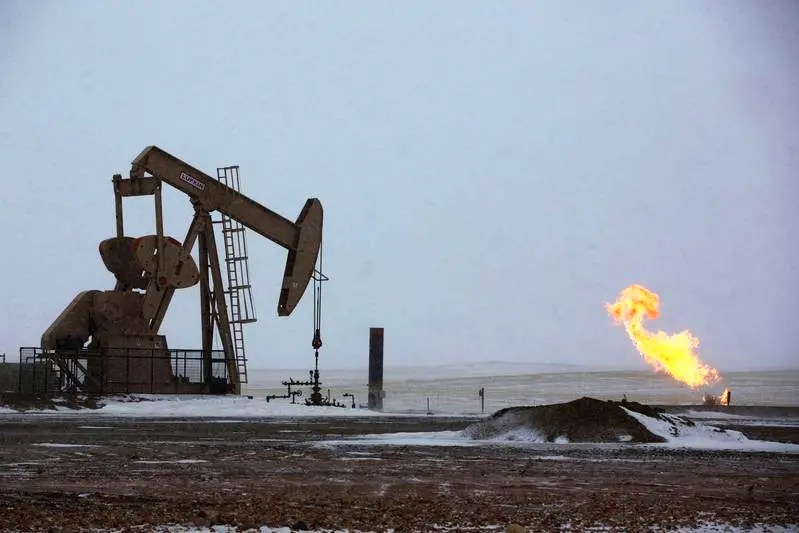PHOTO
The discovery of four new oil fields has drawn fresh attention to Kuwait's long list of expansion projects, as the country aims to raise output by nearly one-third by 2020.
According to an announcement by Kuwait Oil Company (KOC) in April, the company discovered four new oil fields and two new hidden sources, with production likely to start in the near future. Three of the fields, containing high-quality light crude, are located in the western Al Manageesh and northern Al Rawdhatain and Umm Neqa fields, the company noted. The discoveries are the result of two years of drilling by KOC, which pressed on with explorations despite the depressed price for Kuwait Export blend on the world market.
Projects in the pipelineThe recent slump in oil prices has brought new impetus to Kuwait's plans to boost production and efficiency in its energy sector - which despite controlling 6% of the world's oil reserves according to the US Energy Information Administration (EIA) - has long operated below potential, a situation which offers scope for expansion and diversification.
The government is planning to spend $100bn on the oil sector over the next five years to reach its goal of raising output from 2.8m bpd in 2014 to 4m bpd by 2020. The government has pursued a host of large-scale initiatives in recent years, including Project Kuwait, a bid to encourage greater foreign investment; the Clean Fuels Project, which involves a series of refinery upgrades; and a new refinery at Al Zour.
The, Kuwait Petroleum Corporation (KPC), the umbrella company for the country's state-owned oil and gas firms, including KOC, announced a $75bn capital spending plan for 2015-20, split between $40bn for upstream and $35bn for downstream development.
However, many of the initiatives were ones that had been delayed under the previous five-year plan, which closed in 2014 with only 57% of planned spending carried out. Progress has also been slow at many discoveries, such as Kra'a Al Mara (1990), Sabriya and Umm Niqa (2006), largely because these are more technically challenging, being of a heavier and more sour quality, the EIA reports.
Foreign involvement challengingIf Kuwait is to implement its more challenging projects in full, the KPC may need to make more use of foreign expertise. With foreign ownership of natural resources banned by the country's constitution, international oil companies (IOCs) have been recruited in recent years via "technical service agreements" and special buy-back contracts that exclude any concessions or control of output levels.
These structures are part of the Project Kuwait reforms designed to draw foreign investment and boost production by taking advantage of IOCs' technical know-how, especially in the northern fields. Oil major Shell signed a contract in 2010 to help develop natural gas production at the northern Jurassic field, while Japan Oil, Gas and Metals Corporation has inked a deal with KOC to test enhanced oil recovery (EOR) techniques in the country. However, progress under many of these agreements has been delayed by the National Assembly, which scrutinises them for quasi-ownership clauses and often challenges their constitutionality, holding back development.
EOR is another potential area for foreign involvement. According to research by intelligence firm IHS released in May, Kuwait is among the top 10 countries outside North America that could benefit from vast unconventional reserves available through new technologies, with more than 4bn barrels in extra resources. Of the 141bn barrels of such reserves worldwide, 96% would require hydraulic fracturing, an EOR practice that has so far been mostly limited to the US despite its success over the last decade.
Clock tickingDespite deep cuts to spending and subsidies, in January the Ministry of Finance projected a funding gap of $23.8bn, based on an oil price of $45 a barrel, as the country looks set to run a deficit in fiscal year 2015/16, its first in 15 years.
To keep Kuwait in the black, the current rebound to above $60 a barrel would have to improve further - something many analysts and industry participants doubt given OPEC's strategy of maintaining output in the face of low prices in order to squeeze competitors in areas like US shale.
Kuwait has ample fiscal reserves, worth $548bn as of June 2014, according to the state audit bureau, but the country needs to secure oil revenues in the long term to fund its spending plans, most recently a $155bn five-year package of 523 development projects in areas ranging from infrastructure to human resources, announced by the government in January.
This looks set to require new investment and potentially more accommodative policies towards foreign partners, especially regarding difficult oil reserves that are critical to boosting output as older, easier-to-access reserves gradually dwindle.
© Oxford Business Group 2015












